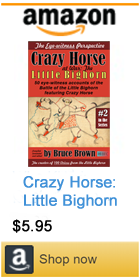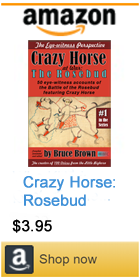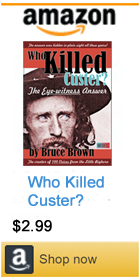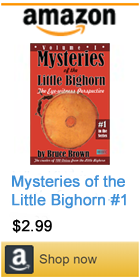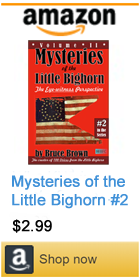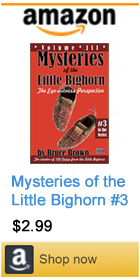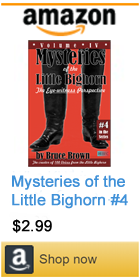|
||||||||||||
Bruce Brown's 100 Voices... David Humphreys Miller's
DAVID HUMPHREYS MILLER'S STORY OF THE BATTLE
Trooper Lerenz [Note: more commonly known as John Lorentz] of M Company was first hit. Hollering, "Oh, my God, I have got it!" he toppled from his mount. Caught in the same volley was Bloody Knife, less than ten feet to Reno's right and slightly to his front. The Arikara was struck square between the eyes, his brains and blood spattering in Reno's face, bits of feathers dancing crazily for a moment in the smoke-fogged air. Completely disconcerted, the major ordered the troops to dismount, then immediately countermanded with an order to remount. Giving no further orders, he whirled his horse and broke through the timber into open plain, the confused troopers close on his heels. There was no chance to re-form the battalion. In a straggling column they stampeded up the valley at a dead run, Reno well to the front, his eyes frantically set on the upstream ford where he and his command had crossed hardly more than an hour earlier. * * *
"Don't shoot me, Auntie!" he begged. "I'll be dead soon enough, anyway." "You're a sneaking cur!" the old woman screamed at him. "Why did you bring the soldiers here?" "I only wanted to see this Western country once more before I died," the Negro explained. Just then Shoots-Walking, Two Bulls, and several other warriors rode up, intending to strip the Negro's body. "Don't count coup on me, my friends," Dorman begged. "You've already killed me. I was shot early in the fighting." At that moment Sitting Bull arrived. He recognized the Negro as "the black white man" known to the Sioux as On Azinpi or Teat. "Don't kill that man!" the Hunkpapa chief said sharply. "He is Teat. He used to be a friend of our people." With that the warriors rode away. Dorman then asked for water. Sitting Bull got him some water in his own drinking cup of polished buffalo horn. After he had drunk from it, the old Negro died. Leaving Dorman's body there in the brush, Sitting Bull rode on north through the deserted village. He passed the abandoned camps, one by one, where skulking dogs prowled, looking for meat. A few tepees in the Hunkpapa camp were damaged by soldiers' bullets and burned, but otherwise the village was intact. Thus assured, Sitting Bull turned the black stallion sharply to the west and headed for the benches. As a chief it was also his duty to look after the women and children, and to see that they made an orderly return to their lodges. In a little while the camp police would be calling everyone to go back to his own tepee-now that the fighting seemed to be over... * * *
Among the grim trophies was the head of an Arikara scout, cut off and carried to the new camp in the bottoms by two young Hunkpapa sisters who swung their grisly prize between them as they walked, each girl firmly gripping a bloody braid. The distinctive side part in the graying hair of the Arikara's head caused considerable comment. Membership in a certain tribe was indicated by hair style among other features. While Crow men wore their hair cut short over the forehead, the rest standing in an erect ruff, the Arikaras merely combed their locks to one side or another. The Sioux and Cheyennes, on the other hand, usually parted their hair in the center, letting it hang in braids or loose hanks at the sides. The excited girls proudly showed the head to their mother who was half Arikara. "Aieee!" the woman gasped in horror. "It is my brother Bloody Knife, who long ago became an Arikara. He and Chief Gall have feuded hard and long, and now Gall has killed him at last!" [Note: George Bird Grinnell also told the same story about Bloody Knife's head after the battle.] But few people believed that Bloody Knife had been killed by Gall, since that Hunkpapa leader had not been among those Sioux warriors led by One Bull through the timber and into the clearing where the Arikara scout had been shot and the rout of Reno's men had begun. In any case, it was unlikely that any individual enemy could have been recognized in all the confusion and dust and gunsmoke, and it was not until after the fight that it was learned that the Indians who accompanied the soldiers were Arikaras. Custer's Fall: The Indian Side of the Story by David Humphreys Miller, University of Nebraska Press, Lincoln, NE 1957 p 102 - 103; 115 - 116; 170 - 175
This piece by David Humphreys Miller contains two commonly heard but unsubstantiated stories from the lore of the Little Bighorn. The unsubstantiated porton of the first is that Reno's face and coat were literally spattered with bits of Bloody Knife's brain matter moments before Reno ordred his "charge" from the timber. The second is that Sitting Bull comforted the dying Isaiah Dorman. * * *
Miller frequenlty made pastel sketches of the Sioux survivors of the Battle of the Little Bighorn whom he interviewed. Some of Miller's portraits are exceptionally fine evocations of the historic personalities in their own right, such as his portraits of Lazy White Bull and Old Eagle and Black Elk late in life. Click here for information of David Humphreys Miller's sources among the Sioux, Cheyenne, Crow, Arikara and Apapaho. -- B.B.
|
||||||||||||



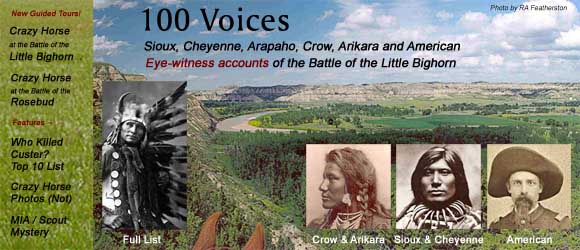
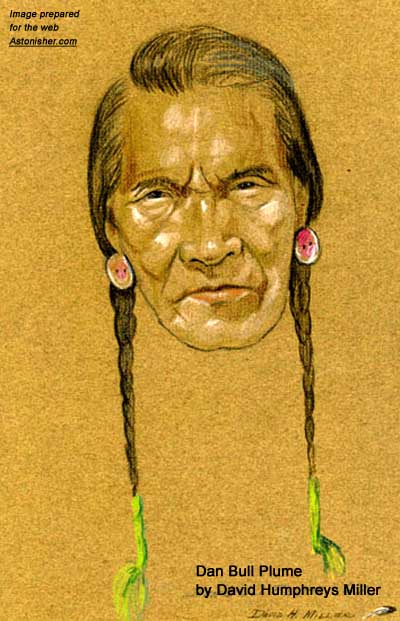 THE ARIKARA with the war bonnet had attracted the attention of the Cheyennes since they had joined in the assault. Breaking into the clearing with the Sioux, Turkey Legs and Crooked Nose kept angling for a sure shot at this enemy "chief." At last Crooked Nose drew a careful bead and fired. [Note: here is Wooden Leg's account of Crooked Nose
THE ARIKARA with the war bonnet had attracted the attention of the Cheyennes since they had joined in the assault. Breaking into the clearing with the Sioux, Turkey Legs and Crooked Nose kept angling for a sure shot at this enemy "chief." At last Crooked Nose drew a careful bead and fired. [Note: here is Wooden Leg's account of Crooked Nose 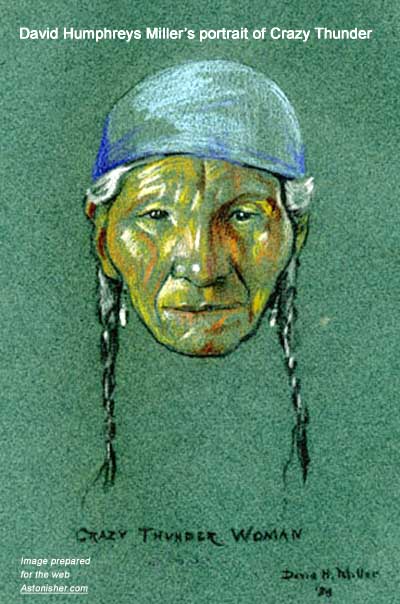 AT THE EDGE of the timber a black man lay dying. His breast was bloody and a gaping wound showed through his shirt. He was Isaiah Dorman, civilian interpreter for the Seventh Cavalry, the Negro who had once lived with the Sioux and knew their tongue. Now, as he sprawled out on the ground, an old Hunkpapa woman pointed an ancient muzzleloader at his head, ready to fire at any instant. She was one of a handful of women who had stayed in the Hunkpapa circle, the first to come out after the fighting let up.
AT THE EDGE of the timber a black man lay dying. His breast was bloody and a gaping wound showed through his shirt. He was Isaiah Dorman, civilian interpreter for the Seventh Cavalry, the Negro who had once lived with the Sioux and knew their tongue. Now, as he sprawled out on the ground, an old Hunkpapa woman pointed an ancient muzzleloader at his head, ready to fire at any instant. She was one of a handful of women who had stayed in the Hunkpapa circle, the first to come out after the fighting let up.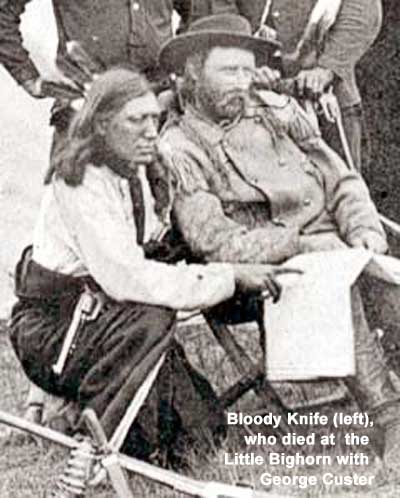
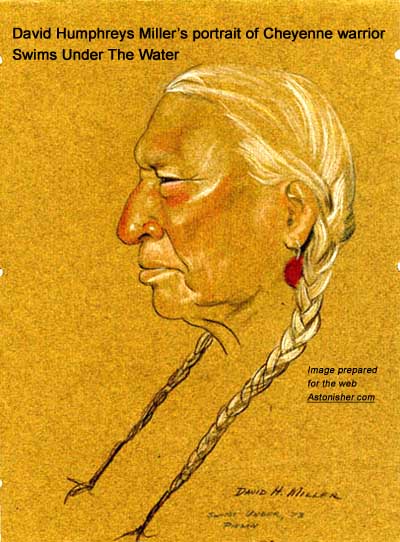 Although not born into the Teton Sioux, David Humphreys Miller was adopted late in life by both
Although not born into the Teton Sioux, David Humphreys Miller was adopted late in life by both 
